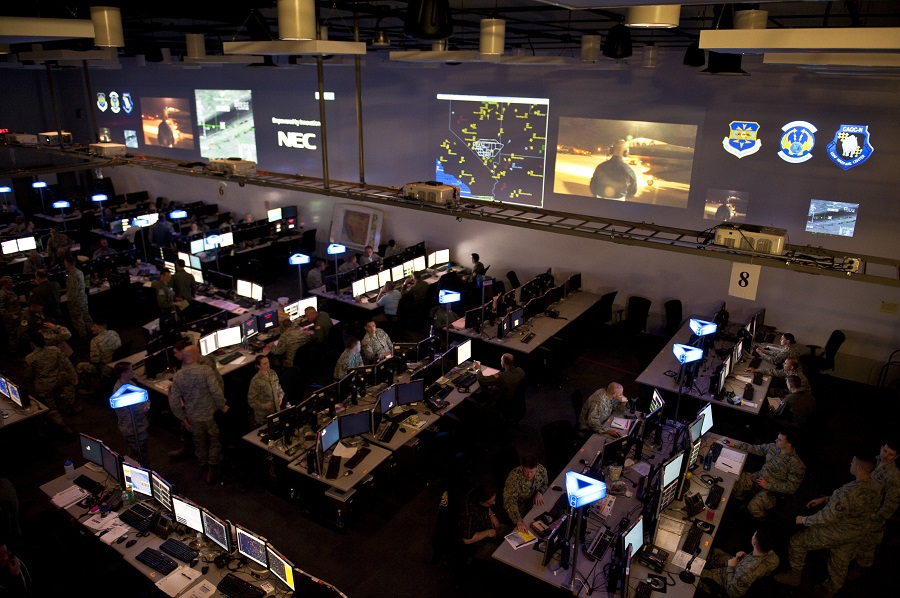Over a decade ago, I consulted on a project for the U.S. Air Force involving very large-scale simulations. These "war games" involved more than 1,500 participants around the world — some in simulators and some using real equipment in training mode. In a warehouse-sized building, a wall of gigantic screens captured the mock battle, as a couple hundred other participants watched from their terminal stations.
The goal of these simulations was to practice strategies for coordinating their actions during complex operations — for instance, enforcing no-fly zones. But these events weren't just for individuals and teams to build their skills. These were opportunities to understand when, how and why a plan for coordinating their efforts could break down. By simulating and evaluating how the large-scale plans played out, the Air Force as a whole could learn, adapt and improve faster. They didn't wait for failure at the organizational level to happen in battle. They worked through ambiguities and ineffective practices when lives were not on the line.
In health care, our leaders must work in mesmerizingly complex systems to improve patient safety and quality of care. Their success depends on simultaneously planning and executing on multiple levels. Among other challenges, they must effectively communicate goals across their organizations; ensure that leaders at every level have the tools and resources they need to meet the goals; coordinate the work of "teams of teams;" and create accountability structures from top to bottom. They must manage this work in an increasingly complex health care environment of competing priorities, hospital consolidation and the growth of health care "systems."
Yet too often the way we plan our responses to patient safety and health care quality challenges is done in a vacuum, where leaders cannot foresee the missing links in their plan or predict its unexpected consequences.
With so much on the line — our patients' safety, hospital finances and reputation — why not take a "war games" approach to practicing our responses? After all, physicians and nurses already use simulations to practice their responses to clinical situations, such as reviving a patient whose heart has stopped. A similar concept may help improve the skills of leaders.
A few years ago, inspired by my experience with the Air Force, I started exploring the use of simulation to help prepare leaders for their patient safety and quality efforts.
Through a grant from the Agency for Healthcare Research and Quality, we’re looking to bring a simulation experience to hospitals on a larger scale. Collaborating with the Johns Hopkins University's Applied Physics Laboratory and Carey Business School, we've designed a virtual hospital environment where teams of hospital leaders can practice their coordinated responses to patient safety challenges. Working in this fictional but realistic hospital, they go on simulated executive rounds, interview key stakeholders and review clinical processes and outcome data. They brainstorm solutions, and then decide which to propose in an organization with limited resources. They then receive feedback on their ideas and get the chance to try again, seeking a better outcome.
This online simulation platform, called Simu-Leader, builds on the success and lessons learned from a similar half-day exercise that we ran in-person several years ago with 55 participants.
Almost across the board, participants told us that they found the experience valuable. They said that it prompted them to think differently about these problems and to leverage the experience and ideas of a broader range of people. Amidst their hectic schedules, they hadn’t actually spoken about these larger issues very often as a team.
With Simu-Leader, we hope to build on the lessons of that program and bring these benefits to a larger audience. We've recruited leadership teams from hospitals across the U.S. and the world to test it out, so we can assess its effectiveness.
Certainly, these health care simulations lack the action of a military war-gaming exercise or of clinicians practicing their responses to a Code Blue. But if proven effective, these programs could have life-and-death impacts that are no less profound for patients and their families.
Photo credit: U.S. Air Force
Try Simu-Leader: Register by Aug. 7
Hospital leaders who are interested in using this simulation program can do so as part of a six-week leadership development course, Fundamentals of Leadership in Patient Safety and Quality. Register by Aug. 7 to start the course on Aug. 21. Details and registration.

Mike,
I am interested in the simu-leader class. Could you provide cost and time in which you offer these classes.
Thank you,
Dr. Jennifer Williams
Is this for Hopkins staff only?